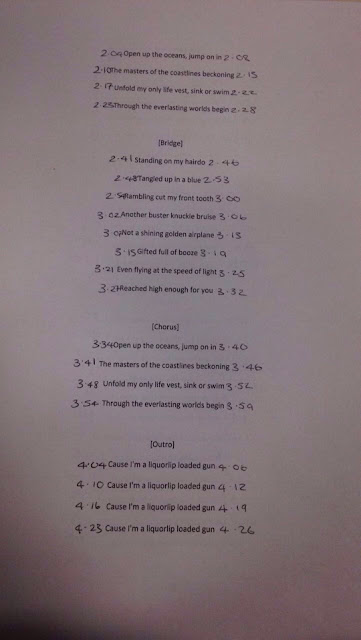Audience Feedback:
I have recieved a fair amount of feedback from members/fellow students in the media department.
One person said that the casting of the couple was a good idea and matched well with the tone of the song. They also said that I should attempt fixing the amount of Camera Wobble.
I also wrote down feedback from a member of the Media Department itself, below are his suggestions of what to change in my video:
- Add a dissolve into the 4th frame
- Add 'home movie' style filter to the footage in the timeline
- Cut the shot of walking from behind as it doesn't promote anything
- Edit the close up of the waves into slow motion
- Edit the some of the walking into slow motion
- Dissolve the walking and standing shots
- Cut the shots with a lot of wobble
- Reverse/flip the 'car shot'
- Create a slow motion motif by adding more in
This person also suggested an idea that I should create a sort of walking montage within the film in order to give my video stages to make it less dull in the middle. We have edited the video in order to make it less dull also using more fades and dissolves to smoothen out the editing making the cuts less harsh and sudden, I feel that this also reflects the tone of the song we chose as it is fairly slow and calm.





















